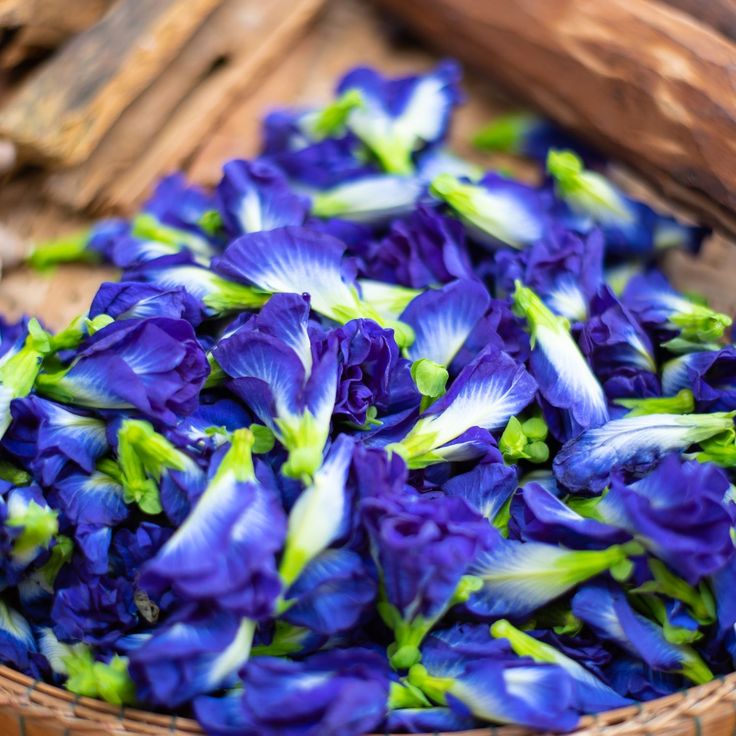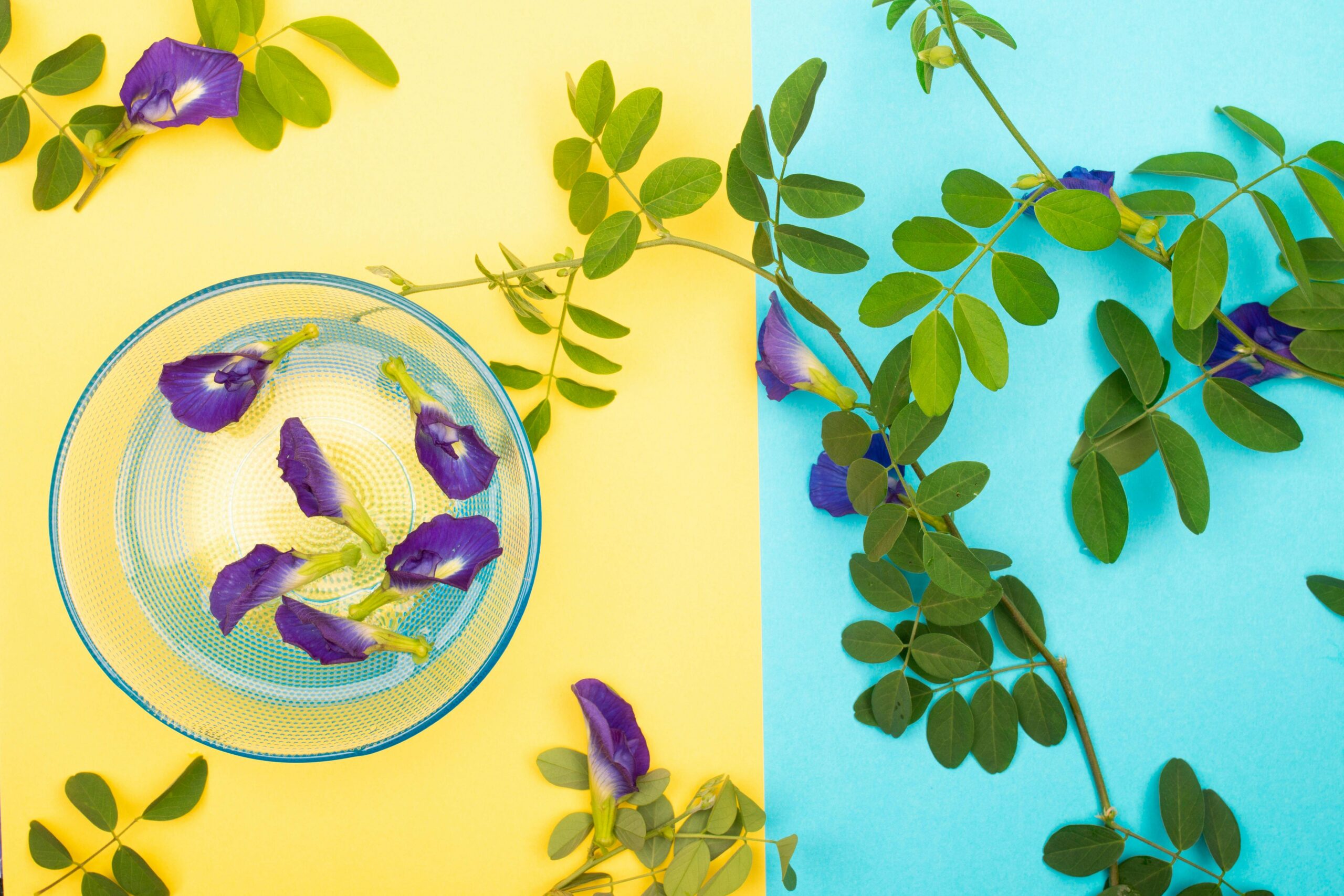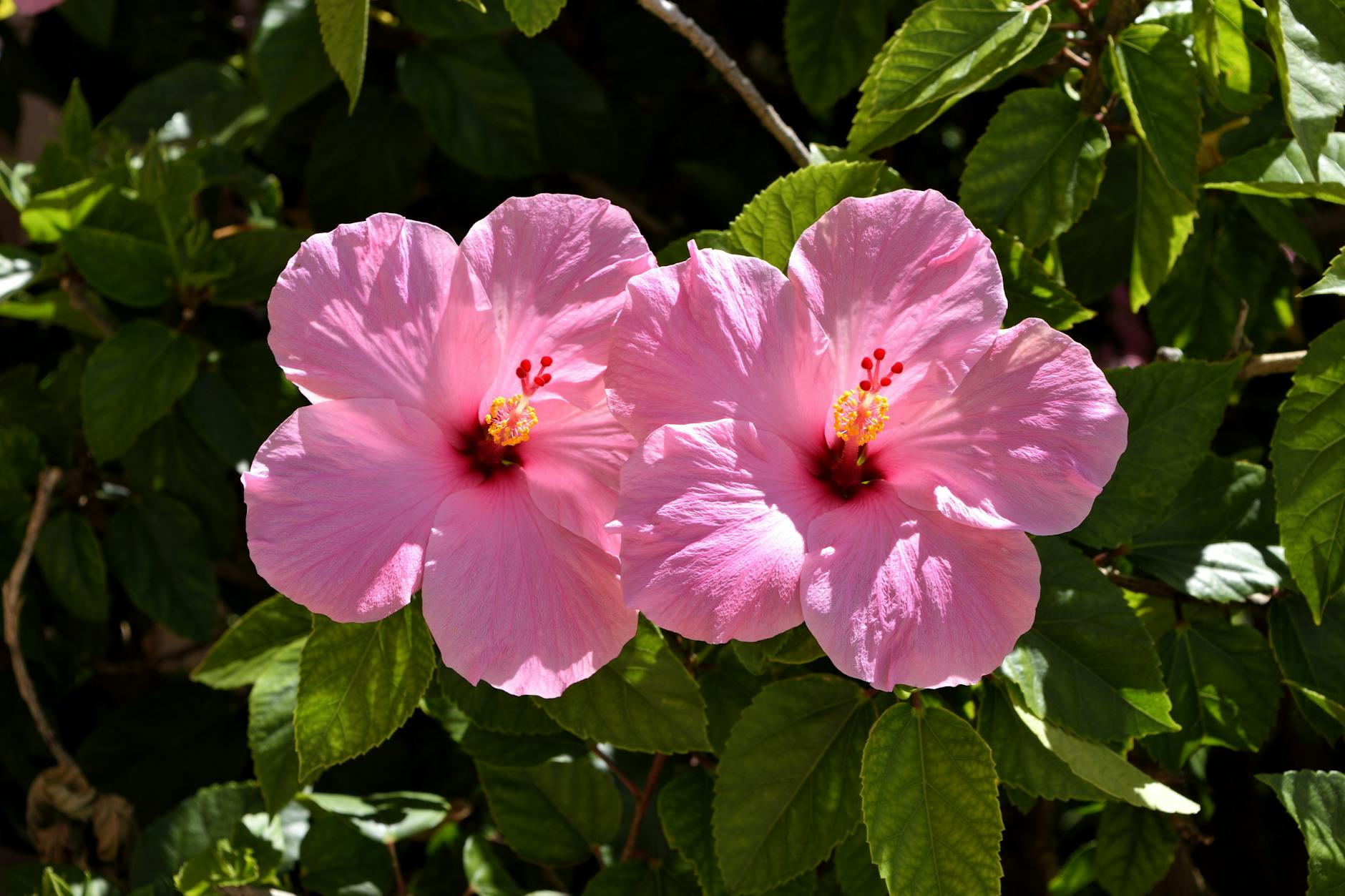What is Blue Pea Flower Tea?
A Blooming Introduction to Blue Pea Flower Tea
Have you ever sipped on something so magical it changed color before your eyes? That’s blue pea flower tea! Also known as butterfly pea flower tea, this vibrant beverage is made from dried flowers of the Clitoria ternatea plant. What makes it stand out is its striking natural blue color, which can transform into shades of purple or pink with a squeeze of lemon. If you’re into herbal teas with a twist, this one is bound to steal your heart.
But there’s more to this tea than its enchanting looks. Packed with antioxidants and health benefits, blue pea flower tea isn’t just a feast for your eyes but also a boost for your body. Whether you’re trying it for the first time or are a long-time fan, this tea brings a little magic to every sip.
The Origins of Blue Pea Flower Tea
The blue pea flower has been cherished for centuries, especially in Southeast Asia, where it’s often enjoyed as a cooling tea. Traditionally used in Thai and Malaysian cuisines, the flower also doubles as a natural food coloring. From rice dishes to desserts, its vibrant blue hue adds a pop of color that’s hard to ignore.
The tea itself is made by steeping the dried petals in hot water. It’s caffeine-free, making it perfect for anyone looking for a soothing drink to wind down. Plus, its mild, earthy flavor pairs wonderfully with a touch of honey or a splash of citrus.
Why You’ll Love Blue Pea Flower Tea
So, why should you give this brilliant blue beverage a try? For starters, it’s not just pretty—it’s packed with powerful benefits. Blue pea flower tea is rich in antioxidants, which help combat free radicals and keep your skin looking youthful. It’s also known for its calming properties, making it a great choice when you need to relax after a long day.
And let’s not forget the fun part. This tea is a real crowd-pleaser when it comes to entertaining guests. Serve it as an ice-cold drink or a warm cup of comfort, and watch their faces light up as the color shifts with a simple splash of lemon juice. It’s like a science experiment you can drink!
A Cup of Creativity

One of the coolest things about blue pea flower tea is its versatility. Beyond the cup, you can use it to create cocktails, mocktails, and even colorful desserts. Imagine impressing your friends with a cocktail that goes from blue to purple or whipping up a batch of blue-hued cupcakes for your next party.
It’s also a favorite among Instagram foodies and DIY enthusiasts. So, if you love snapping aesthetically pleasing pictures for your feed, this tea is your ultimate partner-in-crime. Not only does it taste great, but it also makes for some seriously eye-catching content.
How to Brew the Perfect Cup
Making blue pea flower tea is as simple as it gets. All you need are a few dried flowers and some hot water. Steep about five to six flowers in a cup of boiling water for five minutes, and voilà! You’ll have a cup of stunning blue tea ready to enjoy. For extra flair, add a slice of lemon or a teaspoon of honey to elevate the flavor.
Feeling adventurous? Toss in some ginger, mint, or even a cinnamon stick to create your signature blend. Whether you enjoy it hot or iced, blue pea flower tea is the perfect drink for any season.
The Final Sip
Blue pea flower tea is more than just a drink; it’s an experience. From its vibrant color to its soothing flavor and health benefits, this tea has something for everyone. Whether you’re a tea connoisseur or a curious beginner, it’s time to let your taste buds bloom with this herbal wonder.
So, what are you waiting for? Grab a cup, brew some blue magic, and let the relaxing vibes take over. Your inner tea lover will thank you!
How to Use It: From Teas to DIY Beauty Masks
Blue pea flower is like the Swiss Army knife of the herbal world—versatile, handy, and totally magical. Whether you’re brewing it into tea, crafting vibrant dishes, or creating DIY beauty hacks, this little flower packs a colorful punch. Let’s dive into all the exciting ways you can use blue pea flower in your everyday life.
Sip on It: The Classic Blue Pea Flower Tea
The most popular way to use blue pea flower is, of course, as tea. It’s quick, easy, and oh-so-soothing. To make a basic cup, steep a few dried flowers in hot water for about five minutes. Watch as the water transforms into a stunning blue hue—it’s almost meditative!
Want to jazz it up? Add a dash of honey for sweetness or a squeeze of lemon for a zesty twist that turns the tea purple. Feeling adventurous? Pair it with ginger, mint, or cinnamon for a refreshing herbal blend. Whether you sip it hot on a rainy day or iced on a sunny afternoon, blue pea flower tea is a treat for your taste buds and your soul.
Cook with It: Add a Splash of Color to Your Meals
Why stop at tea when you can take your culinary creations to the next level? Blue pea flower doubles as a natural food coloring, making it perfect for adding a pop of color to your dishes. Use the brewed tea to tint rice, noodles, or even your favorite dessert batter. Imagine serving a vibrant blue rice pudding or purple pancakes at your next brunch—it’s bound to impress!
You can also infuse blue pea flower in cocktails and mocktails. Create a show-stopping drink that changes color with a simple splash of lime juice. Not only will it taste amazing, but it’ll also make you look like a pro mixologist. Cheers to that!
Pamper Yourself: DIY Beauty Masks and More
Blue pea flower isn’t just a treat for your tummy—it’s also a beauty secret waiting to be unlocked. With its antioxidant properties, this flower is a fantastic ingredient for homemade skincare.
To create a simple face mask, grind dried blue pea flowers into a powder and mix it with yogurt or honey. Apply it to your skin for a natural glow and some much-needed hydration. For a refreshing toner, brew a strong tea, let it cool, and store it in a spray bottle. A quick spritz on your face feels like a mini spa day.
Have dull or tired hair? Rinse it with blue pea flower tea to give it a natural shine and strength. This beauty hack is as easy as it is effective—and it smells lovely too!
Experiment with DIY Crafts
If you’re the creative type, blue pea flower can inspire a whole world of DIY projects. Use it to dye fabrics, make natural soaps, or even create your own handmade candles. Its vibrant blue color is eco-friendly, chemical-free, and totally unique.
Looking for a fun activity with kids? Brew the tea and use it as a watercolor paint substitute. It’s safe, mess-free, and sure to unleash their inner artist. Whether you’re crafting for fun or for function, blue pea flower brings a touch of whimsy to every project.
Elevate Your Self-Care Game
Sometimes, the best way to use blue pea flower is simply to enjoy its calming vibes. Brew a cup of tea, light a candle, and unwind with your favorite book or playlist. Pair it with a warm bath infused with a few dried flowers for a luxurious soak. It’s the ultimate way to relax and recharge after a busy day.
Click here to know more about blue pea flower.
The Endless Possibilities of Blue Pea Flower

From your kitchen to your beauty routine, blue pea flower is an ingredient that truly does it all. It’s more than just a pretty flower—it’s a versatile ally for anyone who loves experimenting with natural, creative, and colorful ideas.
So, what will you try first? A delicious tea, a vibrant dish, or a soothing DIY beauty mask? No matter what you choose, one thing’s for sure: with blue pea flower, the possibilities are as endless as your imagination. Go ahead, get creative, and let this magical bloom brighten up your day!
Common Mistakes: What to Avoid When Brewing
Brewing a perfect cup of blue pea flower tea is simple, but even the best of us can stumble into a few missteps. These little errors can dull the vibrant color, alter the flavor, or even ruin the magic entirely. But don’t worry—here’s your cheat sheet to avoid the most common mistakes and brew a cup that’s as delightful as it looks.
Overloading the Flowers: Less is More
One of the biggest mistakes you can make is using too many blue pea flowers in your brew. While it might seem like more flowers would mean a stronger flavor or color, it often leads to an overpowering earthy taste that isn’t very pleasant.
Stick to the golden ratio—about five to six dried flowers per cup of water. This ensures the tea is flavorful without being overwhelming. And remember, you can always steep more flowers if you’re making a larger batch, but starting small helps you control the taste.
Forgetting to Strain: Nobody Likes a Gritty Sip
Letting the flowers sit in your cup for too long can lead to bitterness and even leave bits of petals in your tea. It’s a rookie mistake, but thankfully, it’s easy to fix.
Once your tea has steeped for about five minutes, strain the liquid to remove the flowers. This ensures a smooth, enjoyable sip every time. If you’re someone who forgets timers (we’ve all been there), set an alarm so you don’t leave the flowers steeping for ages.
Using Water That’s Too Hot
Blue pea flower tea is delicate, and boiling water can be its worst enemy. Pouring overly hot water directly on the flowers can scorch them, dull the color, and even destroy some of their nutrients.
The ideal water temperature is just below boiling—around 90°C (194°F). If you don’t have a thermometer handy, let the water cool for about a minute after boiling before adding the flowers. Trust us, your tea will thank you for the gentle treatment.
Skipping the Lemon Twist: Missing the Color Change Magic
One of the coolest things about blue pea flower tea is its ability to change color with acidity. But if you skip the lemon (or any acidic addition), you’re missing out on this magical transformation!
Squeeze a bit of lemon juice into your tea and watch it shift from blue to purple or even pink. It’s not just fun to watch—it also adds a tangy kick that perfectly complements the earthy flavor of the tea. So, don’t forget the citrus—it’s like adding a little bit of magic to your cup.
Ignoring Freshness: Stale Flowers, Stale Tea
Using old or improperly stored blue pea flowers is a recipe for disappointment. Over time, dried flowers can lose their vibrant color and aromatic properties, leaving your tea flat and lifeless.
Always store your flowers in an airtight container, away from moisture and direct sunlight. Check for any signs of discoloration or musty smells before brewing. Fresh ingredients make all the difference in delivering a flavorful and eye-catching cup.
Overloading on Sweeteners
It’s tempting to add a hefty dollop of sugar or honey to your tea, especially if you’re new to herbal brews. But too much sweetness can overpower the delicate, earthy notes of blue pea flower tea.
Start with a small amount and adjust to taste. If you’re feeling adventurous, try natural sweeteners like stevia or agave syrup for a unique twist. The goal is to enhance the flavor, not drown it out!
Forgetting to Experiment: Keeping It Too Basic
Blue pea flower tea is versatile, so don’t limit yourself to the plain version every time. Some people fall into the habit of brewing it the same way over and over, missing out on its full potential.
Add herbs like mint or basil, or infuse it with a slice of ginger for a spicy kick. You can also mix it with other teas, like green or chamomile, for a custom blend. The possibilities are endless, so let your creativity flow!
Give our unique blue butterfly pea flower tea. You will thank.
The Final Sip: Brew Like a Pro
Brewing blue pea flower tea is as much about the experience as it is about the result. By avoiding these common mistakes, you’ll enjoy a perfectly brewed cup every time—vibrant, flavorful, and full of magic.
Whether you’re brewing for yourself or impressing friends, remember these tips and let the blue pea flower take center stage. Happy brewing, and may your tea always be as delightful as you are!




